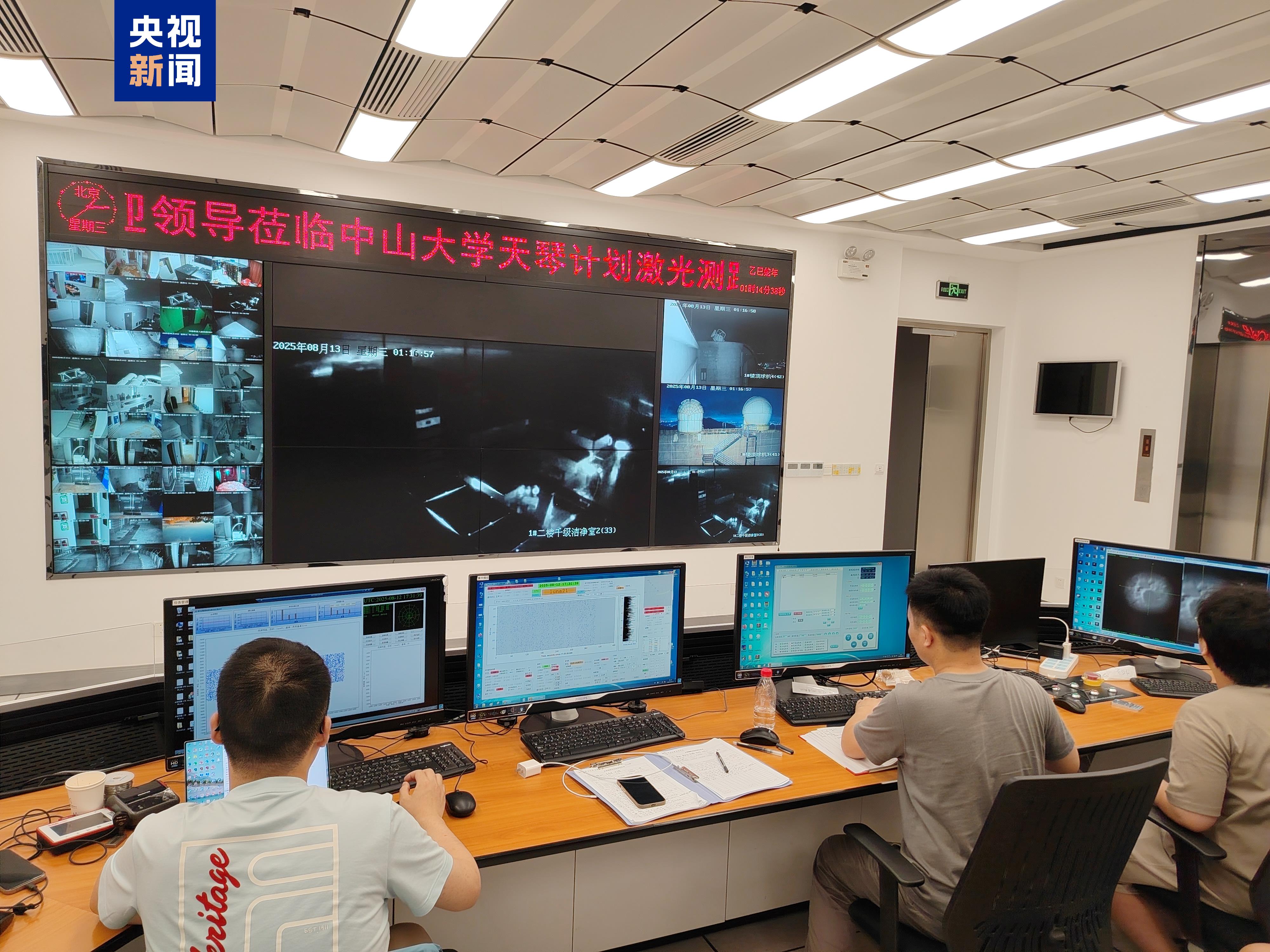

On August 13, the Tianqin Ranging Station at Sun Yat-sen University detected the return signal from the lunar new generation laser reflector NGLR-1 for the first time, confirming the success of the ranging experiment. This is the first time Chinese scientists have detected the return signal from this lunar laser reflector, making my country the first country, after France, Germany, and the United States, to achieve this collaborative measurement, demonstrating my country's leading capabilities in lunar laser measurement.
At 00:37 Beijing time on August 13, engineers Han Xida and Wu Xianlin from the Tianqin Ranging Station at Sun Yat-sen University led a team to detect a laser echo signal from the next-generation lunar retroreflector, NGLR-1. They initially obtained 17 distance measurements. The experiment was suspended due to weather conditions. Subsequently, at 05:39, 38 more distance measurements were obtained from NGLR-1, confirming the success of the ranging experiment.
In the 20th century, the United States and the Soviet Union placed a total of five laser reflector arrays on the moon for lunar observation. In 2019, the Tianqin project team completed measurements of these five laser reflectors. On March 2nd of this year, the US Blue Ghost lunar lander dropped the sixth laser reflector, NGLR-1, onto the moon.
Wu Xianlin explained that these tiny "mirrors" are crucial windows for humanity to explore the mysteries of the universe. Each successful laser echo photon provides unique and crucial data for our understanding of gravity, spacetime, the lunar interior, and the evolution of the Earth-Moon system, helping us gain a deeper understanding of the fundamental laws of the universe and our home.
Han Xida explained that unlike previous-generation corner reflectors, the NGLR-1 is not a pieced-together structure, but rather a single, solid unit with a 10-centimeter aperture. This can be understood as trying to detect a 10-centimeter object on the vast lunar landscape. While smaller, this approach presents greater challenges, but also offers higher precision. It eliminates the range spread caused by lunar libration in previous-generation laser reflectors, providing higher ranging accuracy and supporting long-term research in lunar physics, astrophysics, and cosmology.
The Tianqin Project, a space-based gravitational wave detection program proposed by Luo Jun, an academician of the Chinese Academy of Sciences, in 2014, aims to deploy three identical satellites in an equilateral triangle constellation approximately 170,000 kilometers long in Earth orbit around 2035. This constellation will be used to establish a space-based gravitational wave observatory and conduct cutting-edge research in fundamental physics, astrophysics, and cosmology. This achievement is part of the ongoing Tianqin Project.
- afITUVkhk08/18/2025
- VRrnRhsBHG08/18/2025
- cgCrGjqZ08/17/2025
- OCcTrfjOxyIetI08/17/2025
- VjwuYpOGT08/16/2025
- ayiVeMtEeLB08/16/2025
- RgdGngfX08/15/2025
- waNNQewZybEhX08/15/2025
- McxuvPOFPY08/15/2025
- TuCUXOTho08/15/2025
- AtlxGOZTOaf08/15/2025
- ULflKzff08/15/2025
- eNzYwRUIUtxcyeM08/14/2025
- sKXvXIBMCDyPB08/14/2025